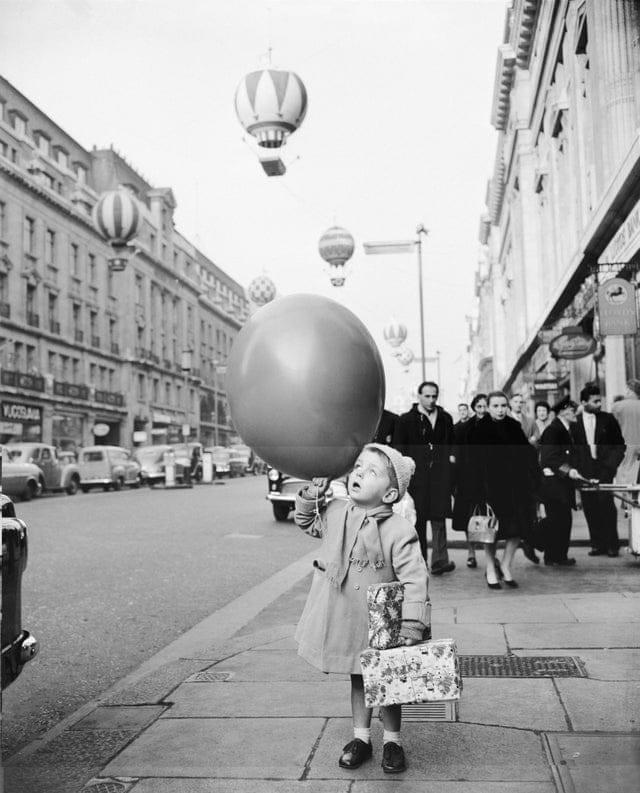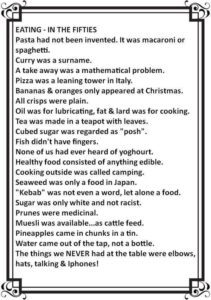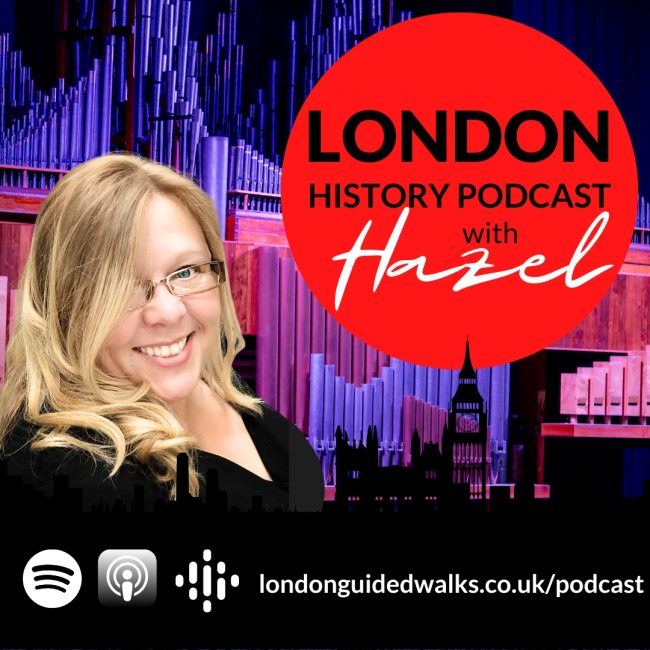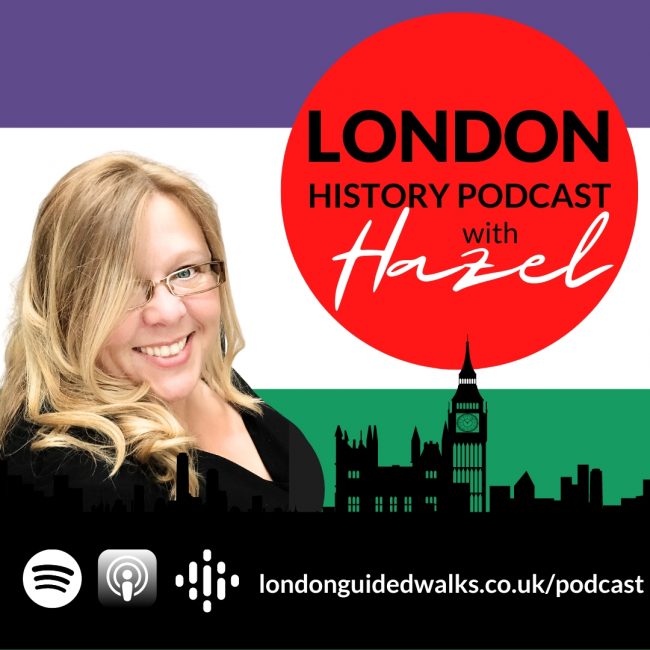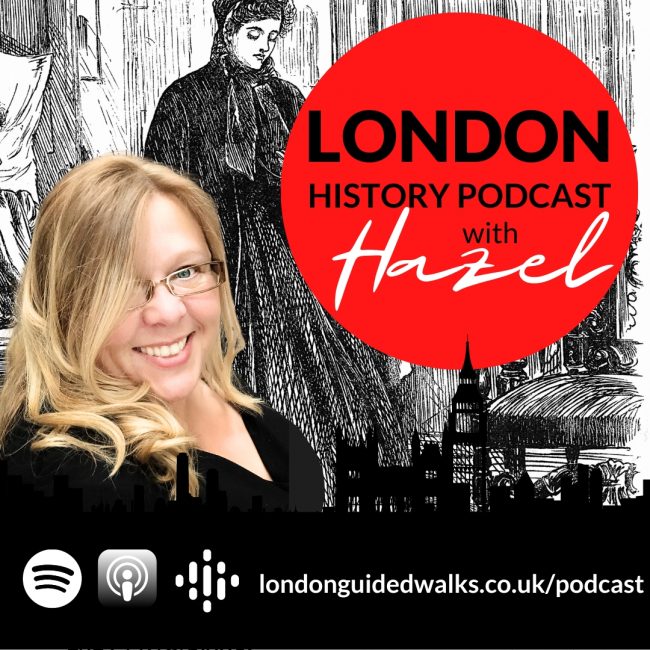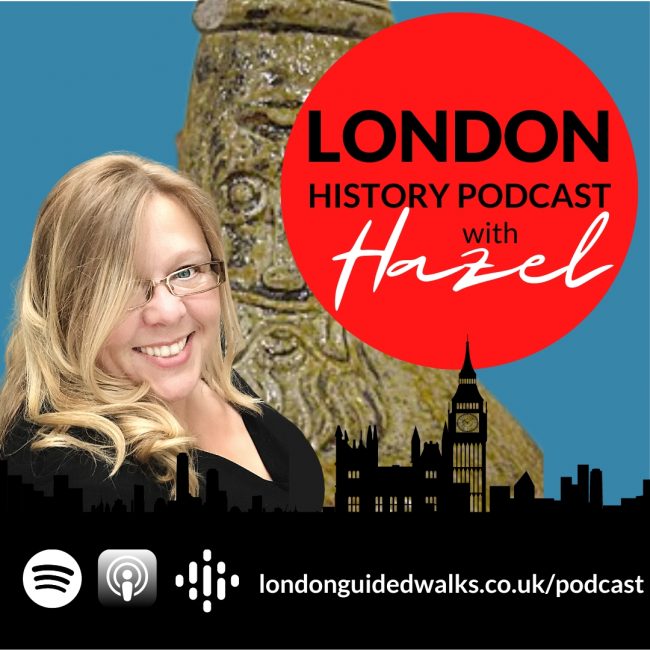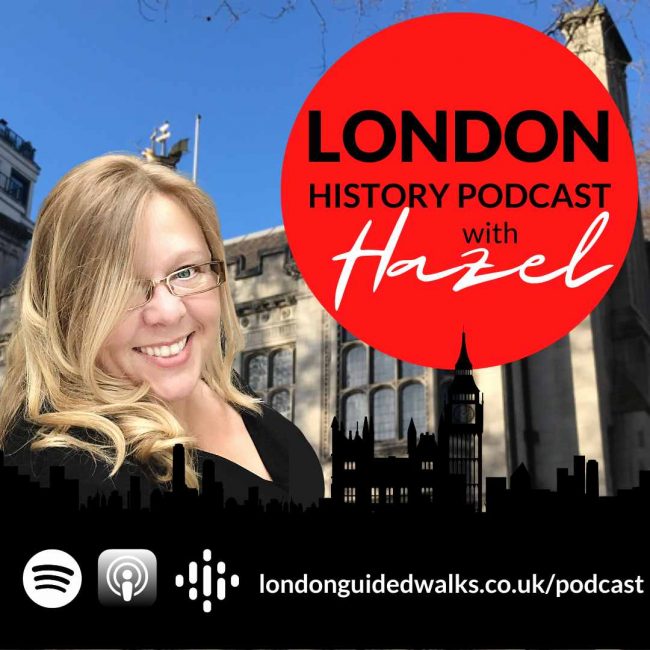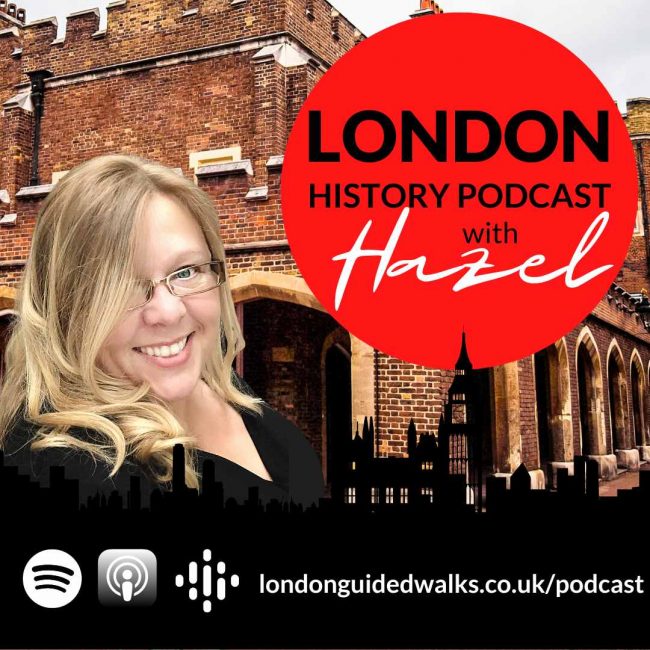London Transport
Lost Property
Lost property on the tube in the final hectic days before Christmas consisted of “Christmas puddings and turkeys, bottles of whiskey, boxes of chocolates and presents, from earrings to pairs of braces” Oh, and a skeleton, don’t worry, it was a plastic one.”
Special Christmas “light-seeing” bus service
London Transport’s Christmas “light-seeing” bus service – route 7L – started in November and was altered to also take in the Regent Street lights and the Trafalgar Square Christmas tree. The open-top service ran from Marble Arch, along Oxford Street and Regent Street and then into Trafalgar Square via Piccadilly Circus and Haymarket and was scheduled at frequent intervals between 5.30pm and 10pm until 6 January, with the exception on Christmas Day. London buses still don’t run on Christmas Day. There were specially marked bus stops along the route. And the price for such a round trip of a seasonal spectacle? A flat rate of 20p for adults and 10p for children. The service was run by London Transport in conjunction with Debenhams on Oxford Street.
Carteret describes a scene on a London bus. A ticket inspector is making his way along the bus “Tickets, please. Have your tickets ready, please.” He approaches a small boy, aged about six, sitting alone on an end seat. “Got your ticket, sonny?” The boy looks down at his feet and says nothing. “Got your ticket, sonny?” (A little louder this time.) The boy blushes. Slowly he puts both hands in his jacket pockets and withdraws a mass of assorted bus tickets from each. He pulls a further wad from his trouser pocket. The ticket inspector smiled. “That’s all right sonny” he says. “You keep ’em!” Now, that is what I call Christmas Spirit.
London’s Christmas Lights
For decades, London has been displaying its Christmas lights and decorations throughout the busy commercial world-famous shopping streets. The display of this tradition is now considered an integral part in preparing for what’s expected to be another successful holiday season by many!
When and where were the first London Christmas Lights?
Well, that’s why I have brought you back to London in 1954. The tradition began in 1954, on Regent Street, when local retailers and businesses – through the Regent Street Association responded to an article in the Daily Telegraph commenting on how drab London looked at Christmas. They arranged and paid for an illuminated light display across Regent Street. Post-war London needed a tonic and a touch of sparkle seemed to do the trick.
It didn’t take long for Oxford Street to join in with the festive sparkle. The first Oxford Street Christmas display was in 1959. However, the first Oxford Street Illuminations, as they were initially called, that stretched across Oxford Street, were first switched on in 1960. There’s a black and white photo in The Sphere showing huge illuminated baubles, a design we would call nowadays vintage, I suppose. These humongous baubles were coloured in various shades of red, gold and blue.
A photo in The Sphere Magazine, 1961, shows huge illuminated baubles along Oxford Street with two lanes of cars bumper to bumper. The pavements are crammed with pedestrians walking past shop signs such as Berkertex and F W Woolworth & Co.
Light Switching on Ceremonies – the Celebrity sparkle
Adding a touch of celebrity sparkle to the lights with a switching-on ceremony created a lot of buzz and PR chatter but this didn’t become a thing until the 1980s. Big names to push the button in the past have included Kylie Minogue (Regent Street 1989 and Oxford Street 2015), Cliff Richard in (Oxford Street 1990), the Spice Girls (Oxford Street 1996), and Ronan Keating (1999). I’m sure to many the chance of seeing a celebrity was more of a draw to weather the West-End crowds compared to seeing Mr Stafford Bourne, chairman of Bourne and Hollingsworth who was President of the Oxford Street Association for that is who turned on the Oxford Street illuminations in 1961.
Christmas Drinks
1966 The Tatler aimed to provide solutions to Christmas in London’s problems such as where to park your car, a guide to behaviour at the office Christmas party plus pages of (and I quote) “lively, entertaining reading packed with pictures of London’s young, energetic people (what is everybody drinking, by the way?)”
To answer their question popular drinks would have been:
- Babycham, the original party drink that’s brought a touch of fun and sparkle to people’s lives since 1953. It’s a sparkling perry (pear cider) made from perry pears which you can still buy today.
- Snowballs were popular during the winter. Snowballs are made with Advocaat, lime juice and sparkling lemonade) and named from its frothy white foam dome.
- Port and lemon, a shot of ruby poured over ice, let down with fizzy lemonade and served with a slice of lemon, a popular special occasion drink associated with the archetypal street-corner pub.
Luxury Coach Shopping Weekend Trips to London
Quickly, the lights grew to be a key part of London’s festive calendar which prompted a new kind of visit to London: The Christmas Experience Shopper.
Shopping, Christmas Lights, London room, cabaret, meal, dancing, Petticoat Lane, Tour of London £45
Christmas shopping & Lights London Weekend
2 nights B&B Olympia Hilton Hotel, Kensington
Luxury return coach travel
Free excursion to Wembley Market
3 day and 2 night shopping trip Ibis Hotel, Euston plus breakfast and a visit Petty Coat Lane Market departing Dec 14 from Tayside, Angus and Fife by luxury coach. Cost £65
Going to the theatre remains a treat that hundreds of thousands of Brits do during the festive season. Yes, the Victorians may have contributed to this tradition with the re-invention of the pantomime but it wasn’t just pantomime audiences flocked to see. Variety shows were hugely popular and there was no other grander than that of The Royal Variety Performance.
The origins of the Royal Variety Performance date back to 1912, when His Majesty King George V and Her Majesty Queen Mary agreed to attend a ‘Royal Command Performance’ at the Palace Theatre in London’s Cambridge Circus (it’s where Harry Potter and the Cursed Child is on now). By 1961 the Royal Variety Performance was at The Prince of Wales Theatre on Coventry Street, near Leicester Square where A Book of Mormon is on now).
The 1961 show was attended by HM Queen Elizabeth, The Queen Mother. The compere was Bruce Forsyth. Better known to modern audiences as a TV presenter, but having been a jobbing performer on the variety circuit himself had a brilliant way with the audience. In the 1961 show he managed to upstage Sammy Davis Junior with his impression of the American star. Davis appeared in a dancing scene with Lionel Blair. This was also the night where the fabulous Shirley Bassey made her Royal Variety debut.
There is a generally accepted rule among artistes appearing in the Royal Variety Show that the Royal Box is not addressed directly. It was the 1961 performance where this was disregarded. A traffic warden comes onto the stage and announces there was a car blocking a side street outside the theatre. He begins to read the registration number out “HRH”. Bruce clasps his hand over the traffic warden’s mouth. You can’t say that! Music hall and vaudeville entertainer Bud Flanagan comes onto the stage to assist. He carefully treads across the stage over to the Royal Box then looking up at the Queen Mother he says, “Throw us the keys down, Mam, and we’ll move it for you.”
Unbeknown to Her Majesty, someone stationed behind the box threw a bunch of keys on to the stage. The Royal Variety is televised which means you can watch past performances including the 1961 show.

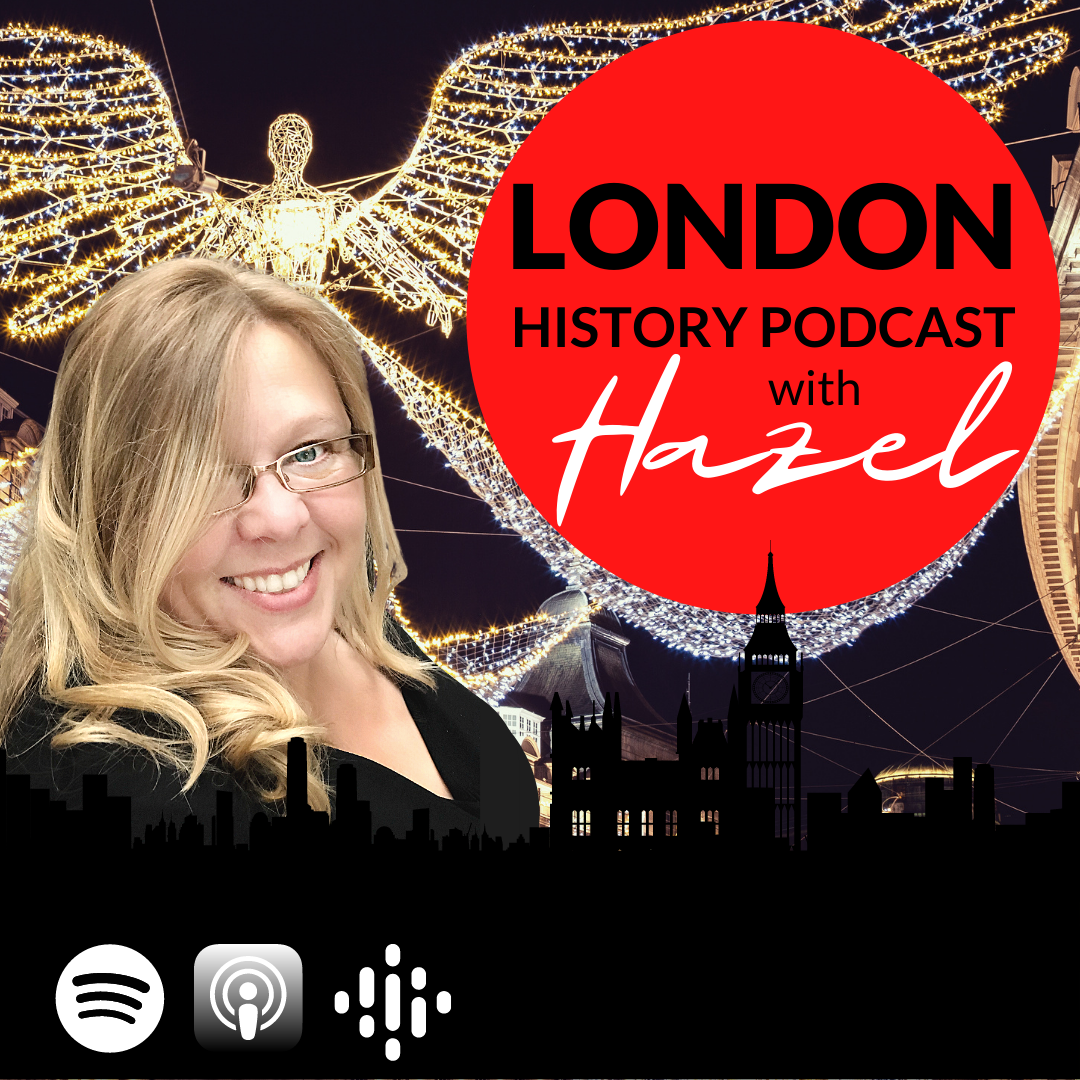
 Hazel Baker:
Hazel Baker: 